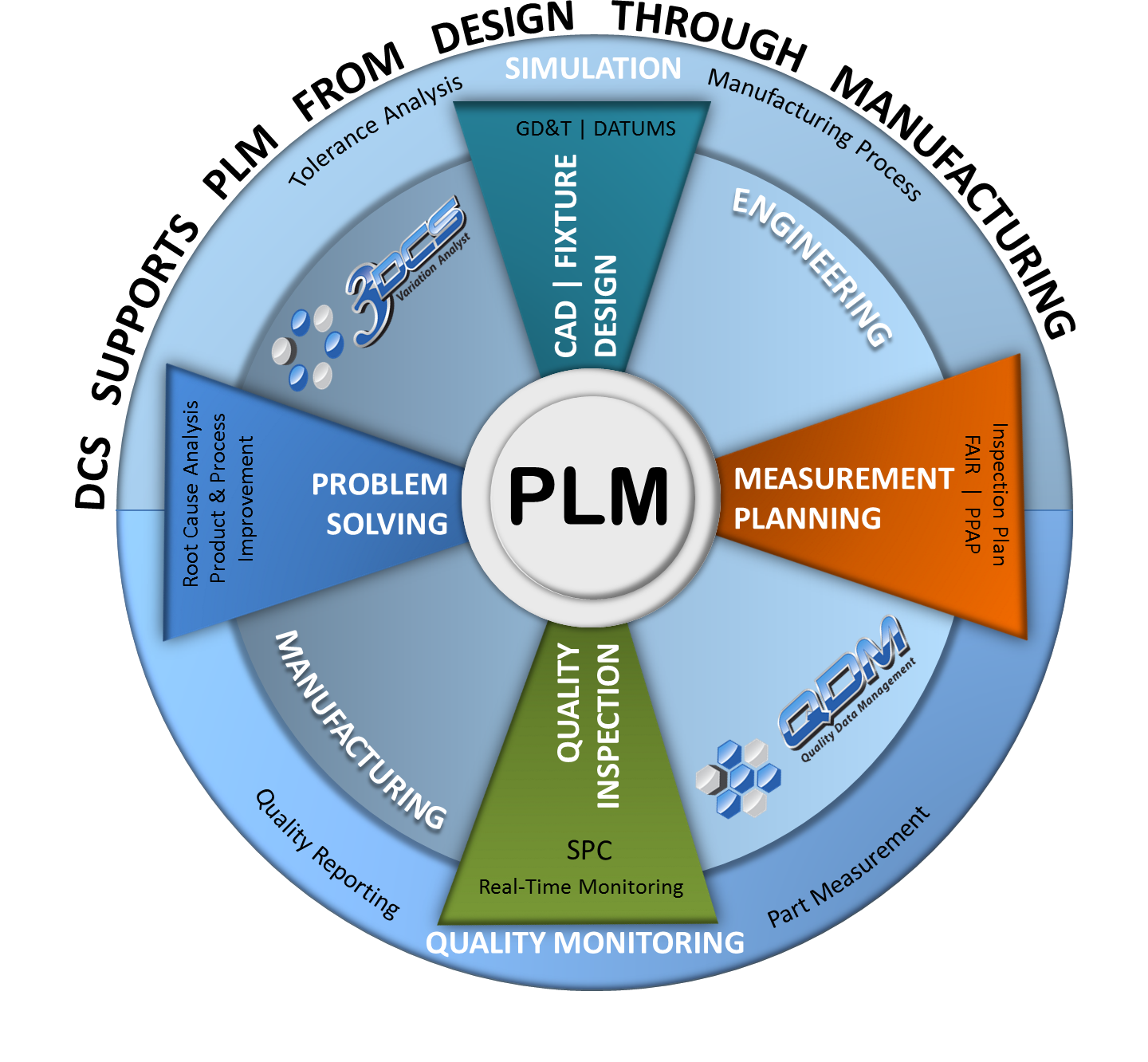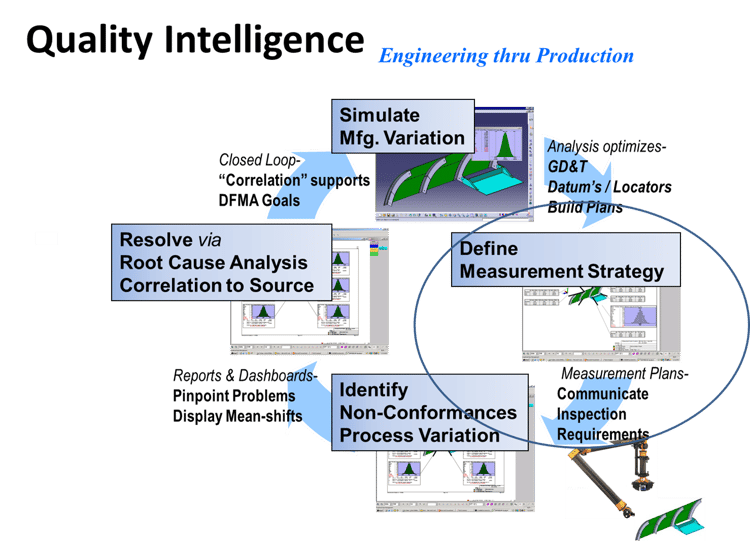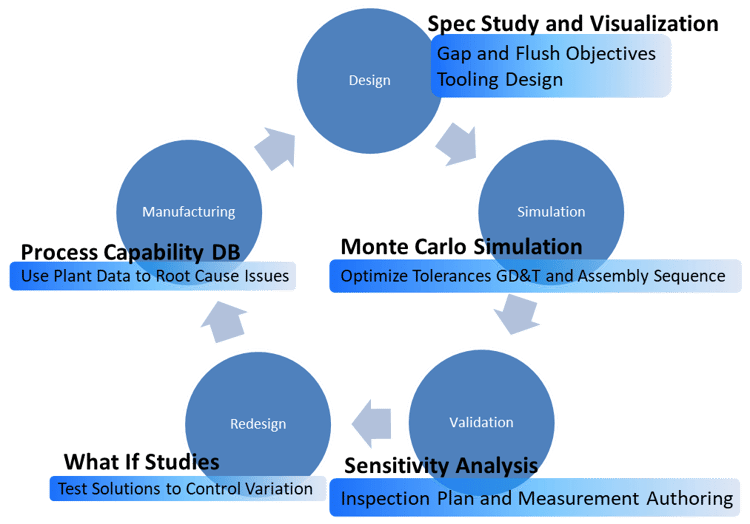
What is Closed Loop? Click Here to find out!
Closing the loop creates feedback loops that push data upstream as well as downstream. As talked about earlier, this can have very positive impacts on your Supplier Quality, but of course, OEM's and major manufacturers are interested in greater cost savings than just improving their Supplier Quality (although that is a big benefit!).
By correlating CAD points with measurement points, engineers can use their CAD model as a powerful tool for problem-solving and root cause analysis. With point correlation, when a build issue is found in manufacturing, the measurement data can be imported into the CAD model, creating a 'virtual build' of the product itself as measured at the plant. Through Monte Carlo analysis, the primary contributors to the identified issue can be identified and then resolved through iterative design changes and analysis. Many software systems, including 3DCS Variation Analyst, offer solutions and give insight into design changes to resolve assembly or part issues.
Closed Loop Manufacturing utilizes the CAD model and its analysis in determining not just what to measure, but where to measure. It does this by identifying the key contributors to variation, ie. those areas, tolerances and parts that will be the primary cause of possible non-conformance. By identifying these contributors and their primary features, quality teams can create more effective measurement plans to monitor these areas through production, making it more likely that any problems will be found early in production, before large quantities of bad parts are made forcing expensive rework, or worse, forcing those parts to be scrapped entirely!

Many people grossly underestimate the number of measurements being taken at a plant. With the invention of point clouds and scanning technology, there is a near-infinite amount of measurement that can take place, potentially creating hundreds of terabytes of data per product. How do you sort through that much data to find something useful? What if you only have the ability to measure a few features?

Closed Loop Manufacturing helps solve both of these issues through identification of critical to quality features. These features are those most likely to cause, and in effect, be a problem during manufacturing. Quality teams can focus on measurements of these features, which will have the greatest effect on overall quality. This can drastically reduce the number of measurements taken and data to process, while still keeping quality at a high level.
By feeding data back to the CAD model for problem-solving, the model itself will continually be improved. If used as a basis for design and GD&T, this information can be pushed downstream to improve the overall process. These feedback loops can be used for continuous improvement of the CAD, and then by using the CAD as a basis for process, continuous improvement of the process itself.

Not only do these feedback loops provide engineers and designers the data they need to improve the product and process, but the model can be easily archived in a PLM system for use in later projects, creating a better platform to begin later projects from. This can push your quality improvements into other projects, allowing your manufacturing to begin new projects one step ahead of the competition.
Closed Loop Manufacturing has been utilized by OEM's in many industries to reduce the Cost of Quality and improve products in ever-shrinking product lifecycles. Learn more about Closed Loop Manufacturing at http://blog.3dcs.com/closed-loop-manufacturing-cad-driven-supplier-quality-and-continuous-quality-improvement
These Stories on 3DCS
No Comments Yet
Let us know what you think